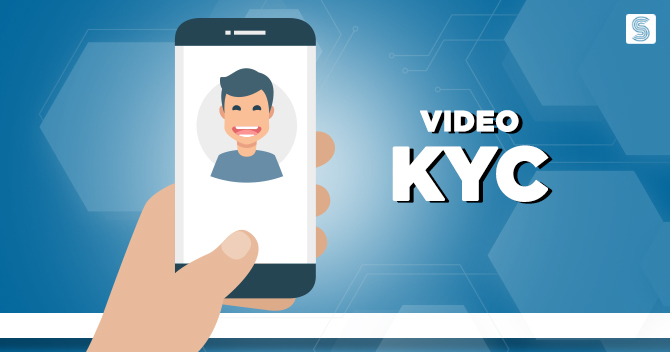Identity verification is an important part of several organizations, especially financial institutions. It helps organizations verify that customers are indeed who they claim to be while also preventing identity theft and fraud.
Two common solutions that are used for identity verification are Video KYC solutions and eKYC. For the uninformed, both of these solutions might feel the same, as the end goal is to verify a customer’s identity. However, there are several key differences between these two solutions that make them unique from one another.
Understanding these differences can help organizations make an informed decision on which solution works best for them. This article explains the key differences between Video KYC solutions and eKYC, enabling organizations to make a better choice.
Understanding Video KYC Solutions
As the term suggests, video KYC solutions involve using video technology (usually via a video call) to verify a customer’s identity. The user is required to provide certain documents and/or perform certain actions that are verified in real time. This helps to ensure that the identity being verified is indeed legitimate and not fraudulent.
Advanced video KYC solutions leverage AI and facial recognition technology to further streamline the KYC process. These technologies enable organizations to accurately identify customers and detect any discrepancies that may exist. Moreover, they also help to speed up the verification process without compromising on security.
Video KYC solutions generally offer two modes of operation: self-verification and agent-assisted verification. Self-verification enables customers to complete the process independently, while agent-assisted verification requires the involvement of an agent or representative who can support and verify customers during their KYC process.
Understanding eKYC Solutions
eKYC solutions are similar to video KYC solutions in that they both enable organizations to verify a customer’s identity. However, they differ in terms of how the process is completed.
Unlike video KYC solutions, eKYC solutions are paperless and do not require the customer to present any physical documents or participate in a live video call. Instead, customers can upload all their relevant documents online for verification.
Users can even use third-party tools such as Aadhaar and PAN cards to verify their identity. The documents are verified in real time by comparing them to a trusted database. If there are any discrepancies, then they can be immediately flagged and further investigated.
Like video KYC solutions, advanced eKYC solutions leverage technologies such as AI and facial recognition. These technologies can carry out advanced checks like blur detection, anti-spoof checks, and passive liveness detection to ensure that the document is authentic and the user is who they claim to be.
Key Differences Between Video KYC Solutions and eKYC Solutions
| Video KYC Solutions | eKYC Solutions | |
| Process | Real-time video interaction | Electronic document submission |
| Document Verification | Involves showing physical ID documents during the video call | Requires scanned copies or photos of ID documents |
| Facial Recognition | Utilizes facial recognition to match the customer with their ID | Typically, this does not include facial recognition |
| Liveness Checks | May include live actions (e.g., blinking, smiling) to prove the presence | No live liveness checks; asynchronous process. Passive liveness checks may be included |
| Regulatory Compliance | Maybe favored in stricter regulatory environments | May vary depending on regulations; often suitable for less stringent requirements |
| Speed | Generally slower in cases of agent-assisted video calls; also, video scheduling can make the process slower | Typically faster and more convenient for customers, it can be slow in cases of technical issues. |
| Biometrics | This may include the use of biometric data such as fingerprints, voice, and iris scans | No biometrics are included, though they may be integrated with other methods for additional security. |
| Security | Higher security with real-time interactions and live checks | Relies on automated document validation; may lower security |
Wrapping Up
Both video KYC solutions and eKYC offer organizations a secure and reliable way to verify customer identity. Based on their needs, organizations can opt for either of the two solutions.
In both cases, organizations should implement a robust, reliable, and secure customer identity verification solution. This will ensure a high level of security for customer data, while also providing convenience for the customer.
It offers online video kyc service as well as eKYC solutions that organizations can use to fulfill their customer identity verification requirements. Organizations can leverage these solutions to securely verify the identity of customers in real-time, with minimal manual intervention.
With advanced AI capabilities, solutions make it easy to automate identity verification processes for seamless customer onboarding while minimizing the risk of fraud. To learn more about eKYC and video KYC solutions and how they can help your business, feel free to contact us. Together, we can make customer identity verification smooth and secure.
Frequently Asked Questions
What is the main difference between Video KYC and eKYC?
Video KYC involves real-time video interactions for verifying the customers themselves, while eKYC relies on electronic document submission without live video calls to verify the documents uploaded by the customer.
How do I determine which solution is best for my organization?
Assess your specific needs, regulatory obligations, and security requirements to choose between Video KYC and eKYC. Talk to our experts to determine the best fit for your business.
What features do Video KYC and eKYC solutions offer?
Our Video KYC solution offers liveness detection, ID document authentication, facial recognition, and others to ensure customer identity is verified accurately and securely.
Can customers choose between Video KYC and eKYC?
It depends on your organization and the type of customer verification required. Some organizations allow customers to choose the type of identity verification they are comfortable with, while others require Video KYC or eKYC for different services.








